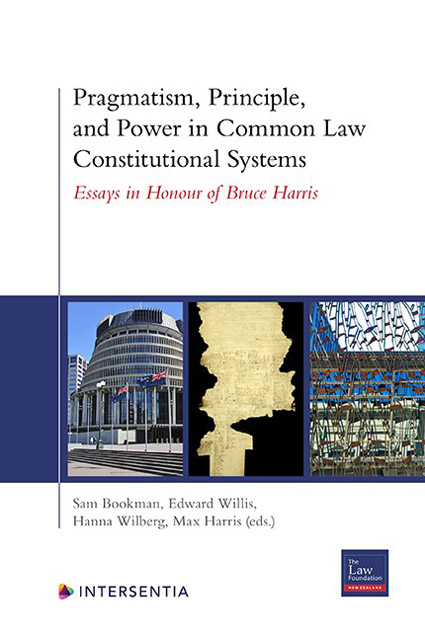 Pragmatism, Principle, and Power in Common Law Constitutional Systems
Pragmatism, Principle, and Power in Common Law Constitutional Systems Book contents
- Frontmatter
- Foreword
- Preface
- Contents
- The Writings of Professor Bruce Harris
- List of Cases
- List of Contributors
- Introduction
- Part I The Nature of Executive Power
- Part II Issues Concerning The Judiciary: The Nature of Judicial (and Executive) Power
- Part III Issues Concerning The Judiciary: Creativity and Pragmatism in Judicial Method
- Part IV Issues Concerning The Judiciary: Judicial Appointment and Accountability
- Part III The Nature of Unwritten Constitutions and Their Future
- Index
Sustainability, Indeterminacy and the Abdication of Environmental Responsibility
Published online by Cambridge University Press: 19 November 2022
- Frontmatter
- Foreword
- Preface
- Contents
- The Writings of Professor Bruce Harris
- List of Cases
- List of Contributors
- Introduction
- Part I The Nature of Executive Power
- Part II Issues Concerning The Judiciary: The Nature of Judicial (and Executive) Power
- Part III Issues Concerning The Judiciary: Creativity and Pragmatism in Judicial Method
- Part IV Issues Concerning The Judiciary: Judicial Appointment and Accountability
- Part III The Nature of Unwritten Constitutions and Their Future
- Index
Summary
INTRODUCTION
The Resource Management Act 1991 (RMA) has been New Zealand's principal piece of environmental legislation for three decades. It was enacted following an extensive law reform process to ‘restate and reform [New Zealand] law relating to the use of land, air, and water’. The RMA promised to bring great change to resource management in New Zealand: among its novel elements were referring expressly to the principles of the Treaty of Waitangi, providing a framework for integrated resource planning and decision-making to be implemented by local government with policy guidance from central government and adopting a purpose of ‘promot[ing] the sustainable management of natural and physical resources’.
The RMA's purpose was a response to the emergence of ‘sustainable development’ as a policy goal on the world stage in the 1987 World Commission on Environment and Development's report, Our Common Future. The report's release coincided with the re-election of the fourth Labour government (1984 – 1990) and the launch of its resource management law reform process. The report's ‘main theme’ was a call for states to integrate environment and economic factors in pursuit of sustainable development, which it defined as development that meets present generations’ needs, without compromising future generations’ abilities to meet their needs. Given that the fourth Labour government was ‘one of New Zealand’s great reforming governments’, it is no surprise that these international developments influenced its resource management law reforms. However, the government stopped short of integrating environmental sustainability goals into the economic and social sectors, as intended by the World Commission, but it did adopt ‘sustainable management’ as the purpose of its new natural and physical resource management bill. Because of this, when it was eventually enacted, the RMA became ‘one of the most ambitious and comprehensive products’ of the ‘hopeful’ 1990s, ‘an era of wholesale environmental law and policy reform’. The hope was simply that the RMA's purpose would herald a change of direction in resource management, resulting in improved environmental outcomes. Everything would depend on how the new legislation was interpreted and applied by decision- and rule-makers, and analysis of its terms began immediately. Unsurprisingly, the focus was on the RMA's definition of ‘sustainable management’ and a debate about its meaning and how it would be applied began.
- Type
- Chapter
- Information
- Pragmatism, Principle, and Power in Common Law Constitutional SystemsEssays in Honour of Bruce Harris, pp. 59 - 78Publisher: IntersentiaPrint publication year: 2022


